The Gooey Science of Melting Cheese
Why do some cheeses melt so much better than others? Stretch your brain with this tasty experiment

Safety
- Uses a knife
- Uses an oven
Difficulty
- Beginner
Time
- 30 minutes
It’s hard to argue with the fact that all cheeses are delicious, but when it comes to melting, not all cheeses are created equal. Some melt into smooth, gooey deliciousness, while others turn greasy, grainy, or just stubbornly refuse to melt at all. What gives? Find out—and learn which cheeses make for the best grilled cheese and pizza—in this easy experiment. (Bonus: delicious snack ahead!)
Ingredients
| QTY | STUFF |
|---|---|
| 1 | flour tortilla |
| 2 tbsp | shredded mozzarella |
| 2 tbsp | shredded sharp cheddar cheese |
| 2 tbsp | shredded parmesan cheese |
Equipment
Cutting board
Chef's knife
Rimmed baking sheet
Oven mitts
Cooling rack
Steps
Adjust oven rack to middle position and heat the oven to 90°c.
Cut 1 flour tortilla into thirds: Cut from the edge of the tortilla to its center in a straight line. Make two more cuts to the center of the tortilla, in an upside down “V” shape, dividing it into thirds.
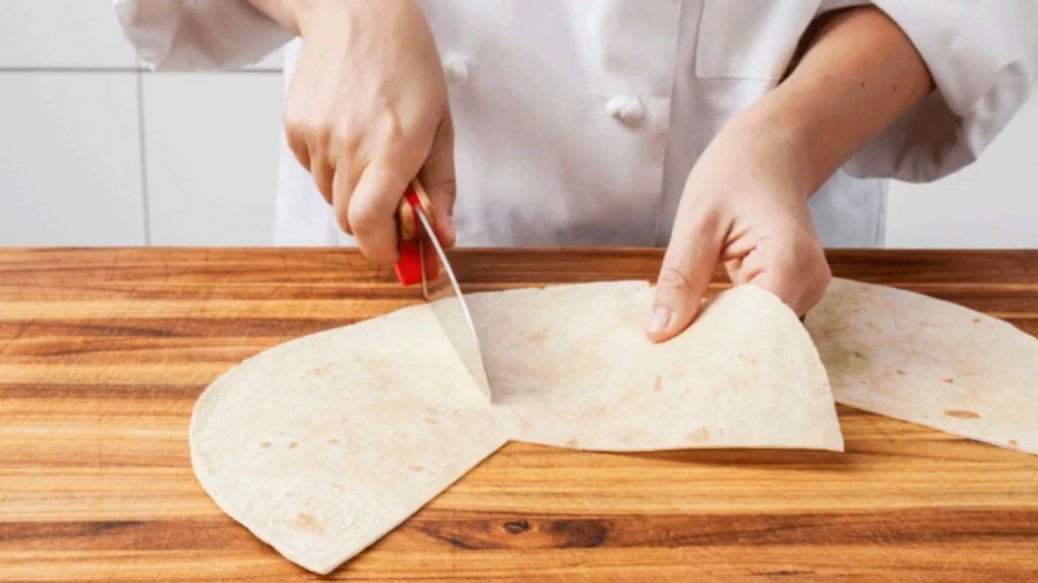
Arrange 3 pieces of tortilla in a row on the rimmed baking sheet. If you’d like, line baking sheet with aluminum foil or parchment paper to speed cleanup. You can use masking tape and a marker to label where each cheese will go.
Sprinkle the mozzarella in an even layer on the left piece of tortilla.
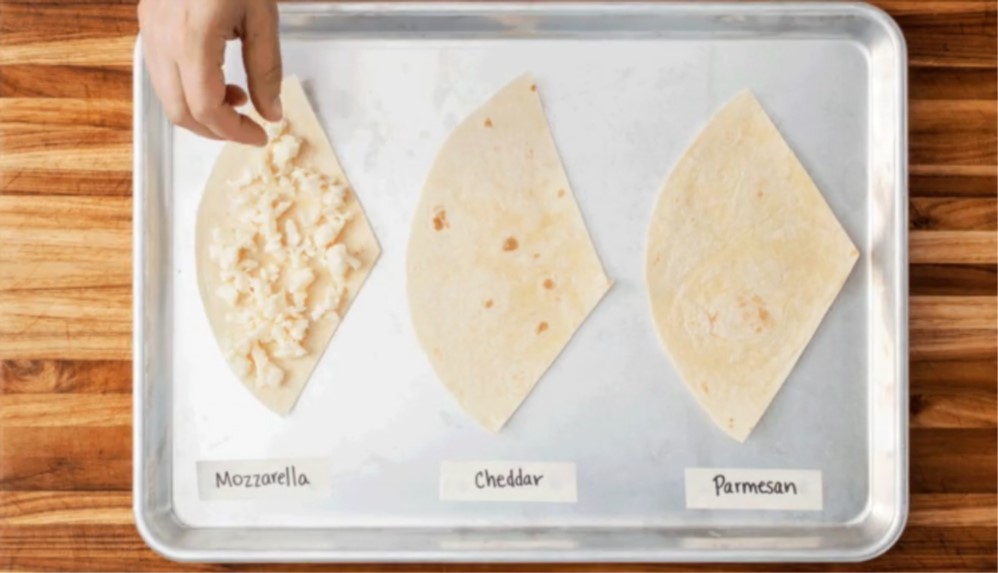
Sprinkle the cheddar in an even layer on the center piece of tortilla.
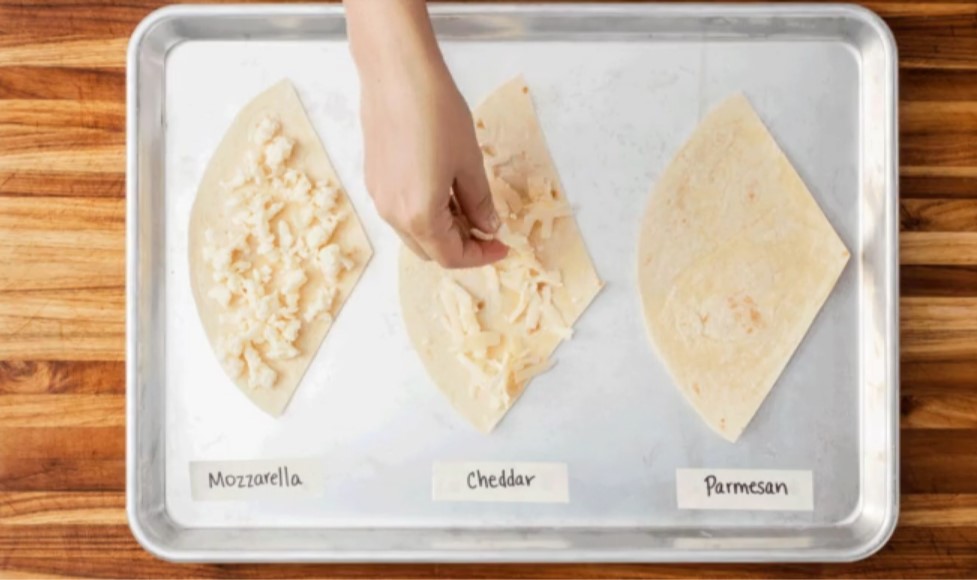
Sprinkle the Parmesan in an even layer on the right piece of tortilla.

Make a prediction: Do you think these 3 cheeses will melt the same way once they go in the oven? What, if anything, do you think might be different from 1 cheese to the next?
Place baking sheet in the oven and bake for 10 minutes. (Ask an adult for help.)
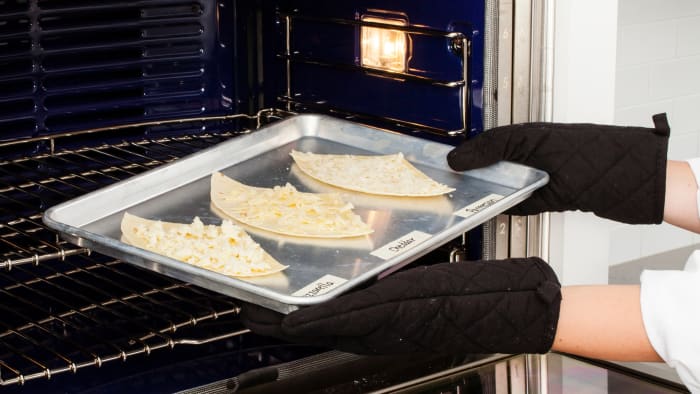
Use oven mitts to remove the baking sheet from the oven (ask an adult for help). Place the baking sheet on a cooling rack.
Observe your cheesy results! After 10 minutes in the oven, do all 3 cheeses look the same? How do they look different? Which would you choose to put in your grilled cheese sandwich or on your pizza? Why?
Eat your experiment! It’s fine to eat any (or all) of your creations! To punch up their flavor, try topping them with salsa, guacamole, or even some marinara sauce.
Food for Thought
Why did they all melt so differently? Before we get to that, let’s talk about how cheese melts in the first place.

See, cheese doesn’t melt the same way an ice cube does when it’s out of the freezer—it doesn’t just go straight from a solid to a liquid. That’s because, while ice cubes are made up of just one “ingredient” (water!), cheese is made up of a whole bunch of things. The most important?
Protein, fat, and water. All cheese is made up of a network of proteins, kind of like lots of tiny cages, that surround bits of fat and water.
In general, when cheese heats up, it melts. This happens in two stages:
- First, the bits of fat start to turn from a solid to a liquid (think of a pat of butter melting when you put it into a pan).
- Then, as things get hotter, the proteins loosen their grip on each other. This causes the cheese to “flow” like a very thick liquid (think honey or molasses). But which cheeses are good at this melty flow . . . and which ones aren’t?
As a cheese gets older, its proteins bond together more tightly, forming a stronger network that requires more heat to melt. Plus, older cheese is less flexible when it’s melted—it squeezes out droplets of fat. The Parmesan was the oldest of our cheeses, and it barely melted at all. We could still see the individual shreds, even after 10 minutes in the oven.
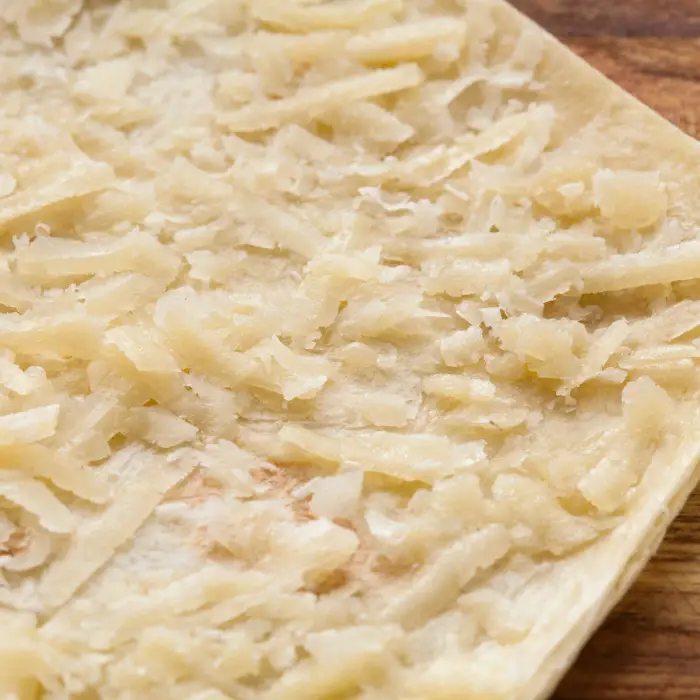
Another major factor? Water! Cheeses with less water don’t melt as well because their proteins cling together much more tightly—there’s less water around to keep them further apart. That means that when they get hot, they can’t flow very well.
Older cheeses have less water. (Yes, we eat old cheese . . . and it’s delicious!) As a cheese ages under carefully controlled conditions, it loses moisture through evaporation and its flavor becomes more concentrated. That’s one reason why older cheeses have more flavor and usually a drier texture than younger cheeses.
Sharp cheddar was our middle-aged cheese. Most sharp cheddars are aged for about six to 12 months. The longer a cheddar ages, the more flavorful, or “sharper,” it gets—for example, most extra-sharp cheddars are aged for 12 to 24 months. While the sharp cheddar did melt, it also leaked some greasy melted fat (this is called “breaking”). If you want to include the flavor of sharp cheddar in your grilled cheese or quesadilla, try mixing it with a moister shredded cheese, such as Monterey Jack.
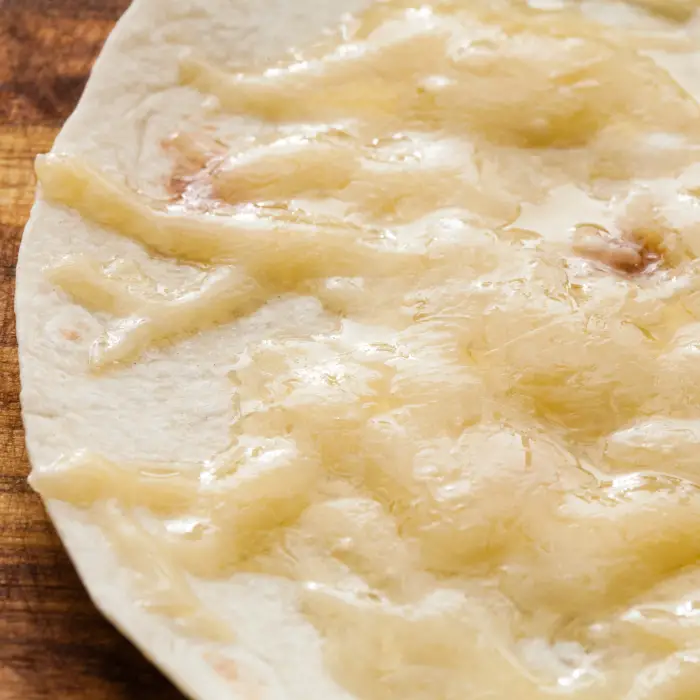
So which cheeses are the best melters? Young cheeses—such as mozzarella (it isn't aged at all), Monterey Jack, and mild cheddar are great choices if you’re looking for gooey, smooth melted cheese. Their protein network is weaker, and these cheeses contain a lot of water that separates the proteins from one another. Bring on the grilled cheese!

Keep testing!
Try this experiment with other cheeses: Colby, Swiss, Monterey Jack, Pecorino Romano, and more. Check the packaging to find out how long each cheese was aged. Do your results follow the same pattern?